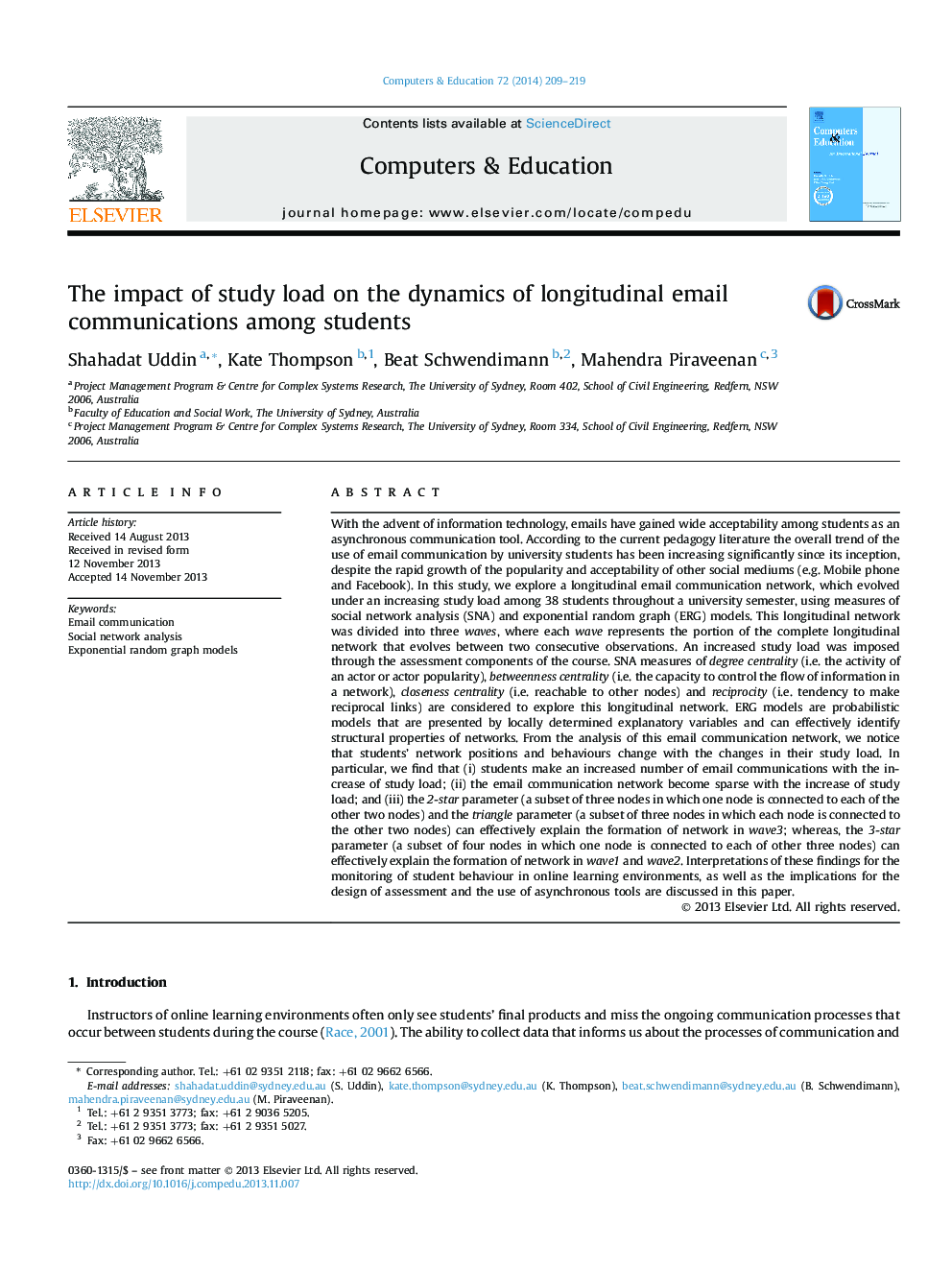| کد مقاله | کد نشریه | سال انتشار | مقاله انگلیسی | نسخه تمام متن |
|---|---|---|---|---|
| 6835287 | 618187 | 2014 | 11 صفحه PDF | دانلود رایگان |
عنوان انگلیسی مقاله ISI
The impact of study load on the dynamics of longitudinal email communications among students
ترجمه فارسی عنوان
تاثیر بار مطالعه بر پویایی ارتباطات ایمیل طولی میان دانش آموزان
دانلود مقاله + سفارش ترجمه
دانلود مقاله ISI انگلیسی
رایگان برای ایرانیان
کلمات کلیدی
ارتباطات ایمیل، تجزیه و تحلیل شبکه شبکه، مدل های گرافیکی تصادفی
موضوعات مرتبط
علوم انسانی و اجتماعی
علوم اجتماعی
آموزش
چکیده انگلیسی
With the advent of information technology, emails have gained wide acceptability among students as an asynchronous communication tool. According to the current pedagogy literature the overall trend of the use of email communication by university students has been increasing significantly since its inception, despite the rapid growth of the popularity and acceptability of other social mediums (e.g. Mobile phone and Facebook). In this study, we explore a longitudinal email communication network, which evolved under an increasing study load among 38 students throughout a university semester, using measures of social network analysis (SNA) and exponential random graph (ERG) models. This longitudinal network was divided into three waves, where each wave represents the portion of the complete longitudinal network that evolves between two consecutive observations. An increased study load was imposed through the assessment components of the course. SNA measures of degree centrality (i.e. the activity of an actor or actor popularity), betweenness centrality (i.e. the capacity to control the flow of information in a network), closeness centrality (i.e. reachable to other nodes) and reciprocity (i.e. tendency to make reciprocal links) are considered to explore this longitudinal network. ERG models are probabilistic models that are presented by locally determined explanatory variables and can effectively identify structural properties of networks. From the analysis of this email communication network, we notice that students' network positions and behaviours change with the changes in their study load. In particular, we find that (i) students make an increased number of email communications with the increase of study load; (ii) the email communication network become sparse with the increase of study load; and (iii) the 2-star parameter (a subset of three nodes in which one node is connected to each of the other two nodes) and the triangle parameter (a subset of three nodes in which each node is connected to the other two nodes) can effectively explain the formation of network in wave3; whereas, the 3-star parameter (a subset of four nodes in which one node is connected to each of other three nodes) can effectively explain the formation of network in wave1 and wave2. Interpretations of these findings for the monitoring of student behaviour in online learning environments, as well as the implications for the design of assessment and the use of asynchronous tools are discussed in this paper.
ناشر
Database: Elsevier - ScienceDirect (ساینس دایرکت)
Journal: Computers & Education - Volume 72, March 2014, Pages 209-219
Journal: Computers & Education - Volume 72, March 2014, Pages 209-219
نویسندگان
Shahadat Uddin, Kate Thompson, Beat Schwendimann, Mahendra Piraveenan,
